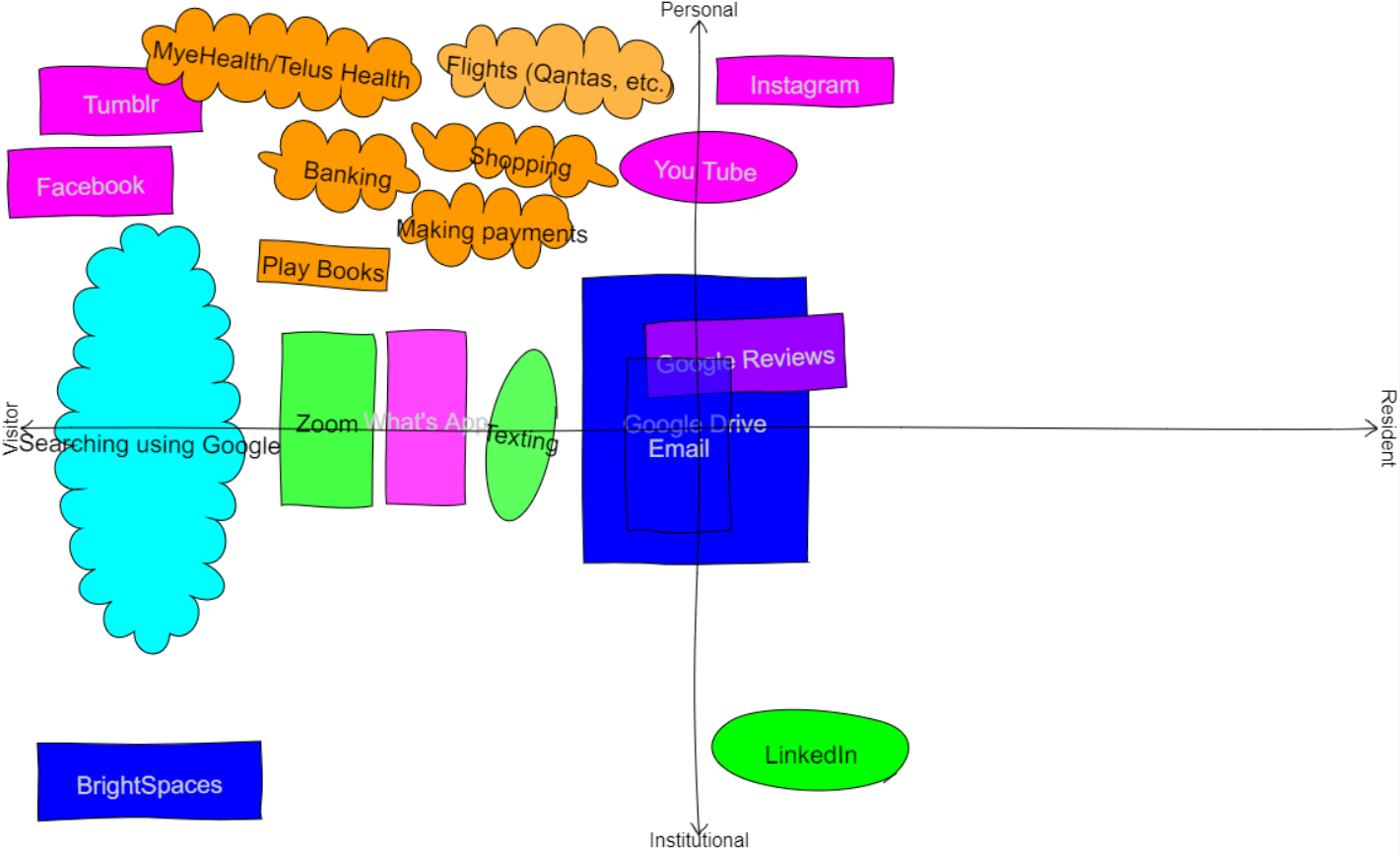“Advocacy is an umbrella term that describes a method, approach and series of tools used to change policies and practices, reform institutions, alter power relations, change attitudes and behaviours and give project work a broader impact” (Begloian, 2016). Advocacy can take place online or offline and across a variety of mediums. Advocacy on social media platforms for example has become particularly popular, as it can be used to inform a vast public audience on various issues, in a way that is accessible to many and easy to understand. Advocacy communications in general as a colleague of mine pointed out @callim, “require clear objectives, knowledge of the intended audience, and language that is appropriate for that audience that is short, specific, and to the point” (@callim, 2021), which makes social media a particularly effective place for advocacy and advocacy related conversations to take place. The way that advocacy tends to look depends on the social media platform that is being used.
For example:

@django. “Paying $23 for a lukewarm hamburger delivered by a guy who has never had health insurance, our economy is running flawlessly”. Twitter, 13 Feb. 2021, 4:03 p.m., https://twitter.com/django/status/1360741374673436673
Figure 1. A typical post whose message is that America requires major political and structural changes.

Source: https://www.mprnews.org/story/2014/09/03/is-the-political-debate-dead
Figure 2. An example of an interactive campaign that includes diverse voices in the conversation about why we should work to abolish student debt and put more effort into helping underemployed students find opportunities.

Source: https://issuu.com/anselmolucio/docs/its_not_just_the_content_its_the_business_model__2/s/10354166
Figure 3. Facebook ads are used here by Joe Biden to extend the reach of his campaigning.

Source: @sywtta. “I just hit 1 million followers on Instagram 🤯. For the good stuff: https://t.co/qFSgs6GRtJ?amp=1.” Twitter, 1 Aug. 2020, 8:29 p.m., https://twitter.com/sywtta/status/1289765237306953728
Figure 4. An Instagram blog that informs users on progressive political and social issues in a graphic slideshow format.
It is important to have a diverse and inclusive PLN in social media sharing with political content for example because we are all stakeholders. It is particularly important to reach disenfranchised groups and to ensure they know that certain organizations and individuals may have their best interests at heart for example, during an election. It is also important to hear the voices of these people online and consider their messages as we change policies and practices and reform institutions so that we can move towards a place where one’s gender, sexuality, race, and socioeconomic status have less bearing on people’s rights and overall quality of life. A relevant example of this being done is in the way that Markiel Simpson utilizes social media to promote the messaging of the BC Community Alliance.
In recent years, social media use in public discourse has frequently challenged advocacy communications. One example of this was former President Donald Trump’s tweets. Typically, reactions were mixed when he would tweet, with a large majority critically dissecting and refuting his messaging and others (unfortunately) taking it at face value. I think it was important for users to be discussing and challenging these sorts of dangerous messages, actions, and opinions such that the public would not be likely to reinstate Trump for another term.
I would say that my PLN does indeed amplify the views of others. I for example have some resources related to the Black Lives Matter movement in my Instagram bio and try to repost content related to the non-profit I am working with when I feel it is appropriate. While I am not directly impacted by the things that members of the Black Community face, I feel as though it is important to be an ally by spreading their message in the hope that things can change for this group of people. The non-profit that I am involved with, called Looking Glass has done much of its advocacy online this year, including participating in the #EDAW2021 campaign, promoting a petition for increased funding and policy amendment with respect to eating disorder treatment, as well as advertising and hosting their usual in-person fundraising gala completely online!
Most employers have strict policies regulating their employees’ use of social media. In the Medical community, for example, professionals are forbidden from sharing identifying details about patients and specific patient encounters. Most businesses in addition do not allow employees to publish certain information or intellectual property in general, or to speak on their behalf on social media unless the post content is approved by that organization’s PR team. It is also expected that employees conduct themselves professionally online on all identifiable accounts.
One rule that I think guides more effective social media use is the concept of getting out what you put into it. The more you actively engage with others online and their content, the more opportunities there are to learn things.
References
Begloian, Anush. “What is Advocay and How Can It Help?” 2016. Culture Partnership. online. 24 February 2021.
Collins, Bob. MPR News. 3rd September 2014. Online. 24th February 2021.
Lucio, Anselmo. Issuu. 2020. Online. 24th February 2021.
Simpson, Markiel. “EDCI 338 – 2021 – 02 – 22 MARKIEL SIMPSON.” 22 Feb. 2021. doi: https://youtu.be/yCSpm1Lx8-A


Recent Comments